Museums of Madrid

"El Prado? Yes, I would like to visit it again", says my english speaking visitor Karen. "Last year, I already was in Madrid for a week and spent four days in this wonderful museum", she added. I am perplex. I could only pull myself together to visit this famous museum after being five months in Madrid; for others, the Prado is one of the main attractions of Madrid; Numerous artists and art lovers swarm to the Spanish capital just because of the museums from which many of them are actually highly recommendable.
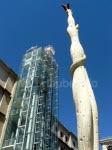
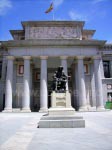
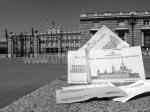
This is the way the "Triangle of Arts" with the art museum El Prado, Museo de Arte Reina Sofía and the Museo Thyssen-Bornemisza stands out. But Madrid also offers an interesting choice of common and curious topics for those who are less enthusiastic for arts.
No matter if it is for a short browsing or for the intensive insight into the matter - in order to take something from Madrid, a visit to the museum is a must.
Museo Nacional Centro de Arte Reina Sofía
The initiation or the destination of a walk on the Paseo del Prado is the museum Centro de Arte de Reina Sofía located in the city district Huertas. From the subway station Atocha (L1) one gets to the Calle Santa Isabel and immediately recognizes the unusual cladding of the museum for contemporary paintings and arts: in front of the big and unconspicious concrete building, the lifts are visible in a glass complex.
The former hospital has four floors; in the basement, there is a small shop and a coffee bar to get refreshed. But the second floor is much more attractive; There, the permanent exhibition of the musuem is exhibited. One of the main attractions of the "Reina Sofia" is exhibited here: the painting "Guernica" sized 8m x 3,50m made by Picasso. Following the crowds, one will find the hall that is exclusively dedicated to "Guernica" without any problem. Those who get previously shortly involved with the history of the painting will probably rather decode the sense of the abstract artwork than those visitors who consider arts to be some nice paintings of landscapes.
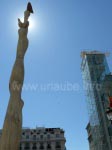
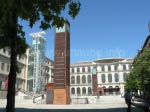
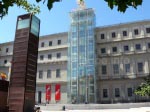
Originated in the year 1937, the "Guernica" is known after the same named basque city, that at that time was destroyed by German bombs. Therewith, Picasso wanted to represent the pain, death and fear, and therewith express his protest. The colour mix of black, white and grey strengthen the spooky atmosphere that is clearly recognizable, but due to the abstractness it also produces a kind of distance.
The "Guernica" is exhibited in the museum since not earlier than the year 1992; before that, it was exhibited in the Museum of Modern Art in New York City. The reason for this was the claim of Picasso to bring the "Guernica" to Spain not before a democratic government was established. In the other floors there are artworks in form of graphics, photographies, a documentation centre and hiking exhibitions.
Tip: the Reina Sofía also offers some days in which the entrance is free; further information is obtainable in the current travel guides or in the tourist information centres.
El Prado
World famous, comprehensive and uncommon - these are the attributes that match to the Museo del Prado. In the proximity of the subway station Banco de Espaņa, a sign indicates to the Paseo del Prado, on which the way automatically leads to the museum.
The "Prado" mainly focuses on Spanish paintings from the 12th up to the 19th century and therewith represents some differerent eras: the romance, gothic, renaissance, baroque, rococo, neo-classic and some European paintings are the dominating styles of paintings.
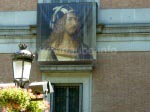
The Prado accommodates a stately collection of approximately 5000 paintings that come from the collection of different royals of the Habsburgs from the 16th, 17th and 18th century. It is apparently one of the most impressive and comprehensive collection of paintings all over the world.
Under the guidance of the arquitect Juan de Villanueva, the building of the Prado was built within the project "Salón del Prado" (Saloon of the meadow) in the year 1785. Originally, the neo-classical Prado was supposed to serve as a scientific museum - but in the year 1819, it convinced as the museum of the royal pianting collection.
Actually, the appearance of the Prado is uncommon. It consists on a main building with doric columns and two widely extended wings. Since the year 2005, the cloister of the adjacent church San Jerónimo has been added.
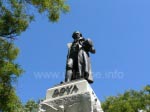
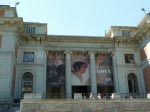
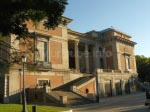
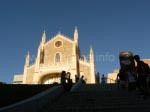
In the museum, it soon gets clear: the interlaced rooms are absolutely not suitable for "rushing through" - the danger of loosing the overview is much too high, as it is already difficult to maintain the overview with a plan. It is better to think previosly what one would like to see in order to proceed in a more focused way (this specially applies to those who are on a short vacation trip who want to schedule their precious time).
But the interlaced rooms are very tastefully and discreetly arranged, a thing that provides a certain ambience that brings out the paintings and the individually appearing sculptures in an excelent way. In many paintings, one could intensively analyze the stylistic device, the direction of style, the topic, because they are pinted in such a fascinating way that one could interpret them several times. The most famous example for this is the painting "Las Meninas" (The court ladies) of Diego de Velásquez (1599-1660), one of the most famous painters of his time. In "Las Meninas", Velásquez shows some fascinating perspectives of different persons. Himself, he is also present in the painting, valets, an infanta and the royal couple Felipe IV and María Anna, who seems to be just entering the room. The snap-shot is interesting that is reflected in the faces of the previously present persons. With a lot of contrasts and shadings, Velázquez created an uncomparable depth of space.
Moreover, famous painters as El Greco (1541-1614), Goya (1746-1828), José de Ribera, Francisco de Zurbán, Hieronymus Bosch, Rubens, Tizian and more are represented. By comparing some of the paintings, the different style elements and topics stand out: sometimes, the persons in the paintings are very explicit, sometimes with strong contours, sometimes very brightly. This is also visible in the ambience that focuses many times on biblic motifs, rural or royal scenes.
In a short overview I will list some special artworks that are also included in the plan of the Prado (the arrangement of the paintings changes the room from time to time!): as already mentioned, "Las Meninas" (Velázquez), "El Jardín de las Delicias" ("Garden of lust", Hieronymus Bosch), "Perro semihundido" ("Semi-sunken dog"), the "Executions of May 3rd, 1808", "The fmily of Charles IV", "The vested Maja" as also "The naked Maja" of Goya, "David, vanquisher over Goliath" (Caravaggio), "The three Graces" (Peter Paul Rubens) and "The Crucifixion" (El Greco) belong to the most interesting works. Some of them represent the life during the respective eras, the values of that time and historical events.
Tip: As the Museo Nacional Centro de Arte Reina Sofía, Prado also offers a free entrance at one day of the week. But then there are so big crowds waiting at the entrance, that one should better save this time. It is very much better to visit the Prado in another day. Those who do not want to pay an entrance fee should visit the museum from 06.00 p.m. One or two hours are usually enough - except for extreme arts enthusiatics, as my friend Karen.
Museo Thyssen-Bornemisza
The last of the three museums of the "Triangle of Arts" of Madrid is the Museo Thyssen-Bornemisza that is located at the Paseo del Prado. The neo-classical building of the museum, the Palacio Villahermosa, was built in the early 19th century and repeatedely re-arranged.
The name of the museum that sounds as anything but not Spanish, is originated in the world of the nobles: the Baron Heinrich von Thyssen-Bornemisza started his collection of paintings from the year 1920. Thyssen-Bornemisza died in the year 1947, and the collection was expanded after that by his son Hans Heinrich. In the year 1993, the collection became property of Spain.
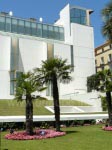
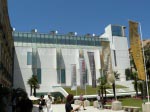
The collection of the museum that is of 800 artworks in total, is supposed to be the second biggest private collection of the world. It is mainly focused on the paintings of different art epochs, on which also the organization of the Museo Thyssen-Bornemisza is orientated. Thus, on the second floor, there are for example paintings of the early rennaissance, the renaissance and the baroque. The collection also represents the epoches of the romance, realism, impressionism and modern arts. The arrangement of the artworks offers an ideal comparison to the visitor of the different topics and painting styles. Despite of the abundance of the exhibits, the Museo Thyssen-Bornemisza appears more clearly and structured as the Prado, which can be confusing also in case of having a plan.
The palms and the plants at the entrance of the museum provide a nice flair. By the way, here, there are also nice seats in order to relax and reflect about the visit.
Museo de America
A museum about America in Madrid? Gosh, not only that the American habits are getting increasingly common in Europe, now we also have a museum, some people might think.
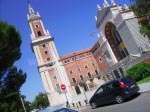
But the Museo de America does not only show the development of Mc Donalds or the American daily culture. No, the visitor gets here an insight into the colony history of North- and Southamerica and into the cultures that lived there. Different rituals and habits are visually represented - contrary to the "Triangle of Arts", the Museo de America is perfectly suitable for children, as the museum offers a diversified exhibition.
The conquer of the areas by Spain are explained in detail; but the brutal eradication is omitted. Specially those visitors who know some areas of Southamerica will recognize the interesting roots of the way of living of today and the influence of the Spaniards in many areas of Latin America. The treasure of the Incas and Columbus are specially impressive. The Museo de America is located close to the subway station Moncloa (L6) or Islas Filipinas (L7).
Palacio Real (Königspalast)
The Royal Palace of Madrid is one of the last places where I can feel relaxed for more than one hour - the dimensions are too big, the decoration of the interior is much too exaggerated and the atmosphere is much too strict. But nevertheless - at least a short visit to the Palacio Real is worthwhile. Located in the Calle Bailén, close to the subway station Opera (L2, L5), it is easy to get there.
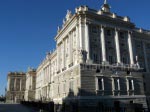
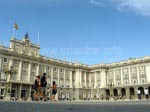
We start our tour in the generosly arranged inner courtyard. By having a closer look to the mighty building of the Palace one notices that it is not about Spanish baroque but that the style is rather representing some Greek and antique building elements. The building style was influenced by the Italian arquitect Sacchetti, who took part in the creation in the year 1764.
Our way leads us to the royal armoury that shows some weapons as also numerous armaments for knights, knaves, children and horses. What is amazing is that a lot of the exhibits are still in a very good condition. Close to the exit of the armoury, one has a wonderful view to the west of Madrid and a giant lawn - and trees, as far as the eye can reach.
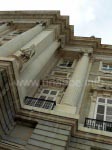
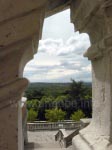
Before entering the Palace, we still have a look to the royal chemistry, that also contains a laboratory and where one can see how the medicines were produced and kept.
The interior of the palace receives its visitors with some majestic front stairs. The mighty Palacio Real is supposed to accommodate approximately 2000 halls, of which the audience can only visit a part. But this small part is sufficient to satisfy the need of viewing. Despite of the partly different styles of arrangement, many rooms look similar. The oftenly appearing lustres are characteristical, as there are only few rooms illuminated by natural light.In some halls, there are a lot of paintings of Goya, Velázquez, Rubens and more painters - it becomes clear that these painters were really prestigious; Also today, they belong to the upper class in the art schools.
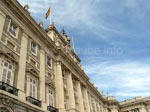
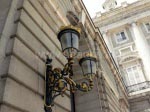
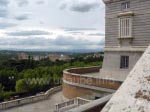
Some rooms as the Salón de Columnas (column hall) are used still today for festivities and special occasions. The ceiling paintings "The sunrise and the triumph of Baco" are also very interesting, the lustres and the arrangement of the curtains that show a door without an alleayway in one spot. The intention of this was to keep the symmetry of the Sala de Alaboarderos behind it.
The Comedor de Gala (dining room) shows a huge table that is used during state visits. The dining hall features those elements that were tyoical for such type of halls: huge dimensions, generous archs and gold arrangements as also huge wall carpets. The visitors involuntarily ask themselves how many guests must dine there in order to have a pleasant atmosphere.
Curiously, the Palacio Real even has a cinema that is presented in a completely different style of the previous rooms: brightness, parquet and an Italian arrangement are dominating, a thing that makes the hall to appear simple but very classy. In the Sala de plata (Silver Hall) there are different cristals, porcelain and dinner ware of that times exhibited. By looking to those peaces one will notice the artful arrangement of these.
By leaving the Sala de plata, we get into an alleyway that is surrounded by night. Although the silver hall was not dark at all, the alleyway appears in a high contrast. Behind the bright curtains, one has a view to the inner courtyard with a lot of archs, the nice veranda and arched windows. The finale is made by the china room and the billard room - a small room with a high ceiling and a very interesting arrangement of the walls.
Real Academia de Bellas Artes de San Fernando
Despite of the central location in the Calle Alcalá at the subway station Sol (L1, L2, L3) not very known but very well worth seeing is the Real Academia de Bellas Artes de San Fernando. As the name already says it is about an exhibition of art works, as it is the case in the museums of the "Triangle of Arts". But differently to the Museo Nacional Centro de Arte Reina Sofia, El Prado and the Museo Thyssen-Bornemisza, the Real Academia de Bellas Artes de San Fernando is definetely more clearly and concentrated. The founder of this organization was Fernando VI. The purpose of this was to support the artists and arquitects in the sense of the academy that, amongst others, also contributed to the building of the Palacio Real.
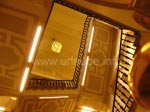
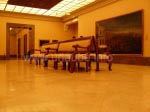
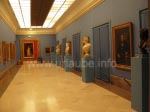
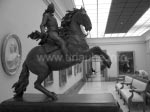
Thus, there are a lot of paintings and sculptures to see made by artists mainly known in Madrid but less known elsewhere. But beside this, also famous artists like Goya, Velásquez, Rubens or Mengs are represented. The latter was declared in the year 1761 to the royal court painter, a thing that was the award par exellence. Specially interesting works from Goya are "Los caprichos", "Das Inquisitionstribunal" and "Das Irrenhaus", with which he followed his impulse to represent madness.
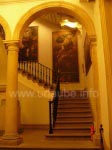
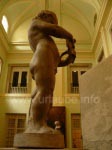
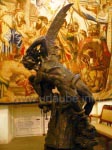
The Real Academia de Bellas Artes de San Fernando is tastefully arranged; the different colours of the rooms in red, yellow, green and blue set some stylish courses. The building style strengthens this effect with numerous archs and other elements of arrangement. Originally, the academy had a baroque cladding that soon deviated from the perception of arts of the academy and was replaced by a cladding in neo-classical style.
Descalzas Reales (Convent of the Royal Discalced)
"Were the 33 nons of the Monasterio de Descalzas Reales really found without any socks?" I ask the female guide of the tour in the Convent of the Royal Discalced. "Almost", answers the Seņora. "They only wore some sandals, but never stockings, a thing that was, of course, very cold in the winter. But the life in the convent was generally not a bed of roses", she adds and refers to the getting up at the very early morning in order to pray, a thing that would be a big effort for some people.
Differently to the other convents, this Monasterio in the proximity of the subway station Gran Vía (L1, L5) seems to be a really posh convent; With a high probability, there is no other convent with so many artworks and paintings anywhere else. This is probably due to the reason that the Monasterio is accommodated in a former palace.
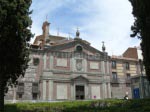
The convent life began approximately in the year 1560 after its foundation by Juana de Austria, whose father was Carlos V. Her serious, nearly cheerless gazes in the paintings are strengthened by the dark clothes and these paintings are present nearly everywhere in the convent. In former times, a lot of churchy festivities as for example baptisms or weddings celebrated. At the same time, the convent served for the accommodation of the visitors of the royals.
The artworks of the convent are partly very different. Some do not appear authentic at all, but apparently this was a popular painting style at that time. The paintings of the royal families often appear in the same dark style, as Juana de Austria is alwaqys represented. The most incredible painting of them is the portrait of a little child that even does not have hair on his head yet but is already wearing some royal clothing. In the paintings of the baroque that apparently are independent of the persons, a custom stands out that is only known by deeply informed art experts: at that times, real persons were oftenly represented in religious paintings, as for example Felipe IV or Isabel Clara Eugenia.
In he convent, there are generally those paintings exhibited that represent some metaphors. A specially intreresting artwork whose artist was unknown stayed in my mind: the day of the last judgement. On jthis painting, the sea full of sharks and monsters as also a boat with devils and humans are visible. From this boat, some smaller boats depart to a big ship that brings the passengers to a light flooded bay. At the bank of this artificially appearing bay, Jesus and others are waiting in order to accompany the arrivals on the long escalator that leads to heaven.
Tip: in the summer time, approximately 5 groups of 20 persons each are admitted. But those who arrive on a day where the entrance is free five minutes before the opening, will surely have to wait as the 130th person. Thus, either one gets to the convent half an hour before the opening or one chooses a different day for the viewing.
Monasterio de la Encarnación
Standing a little in the shadow of the Monasterio de Descalzas Reales but equally beautiful and worthwhile seeing is the Monasterio de la Encarnación ("Convent of the Encanation") between the subway stations Opera (L2, L5) and Gran Vía (L1, L5).
The Monasterio de la Encarnación is a baroque convent that was founded in the year 1611. It is famous for its relic hall that is dedicated to the martyr St. Pantaleón: in the hall, his bones, cranial and an ampoule with his blood are kept. The latter developed to a ritual of the church that is transmitted each year between the 26.07. and 27.07. on TV: the liquidation of the thick blood.
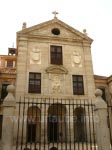
In the convent, the guidances are held in Spanish language; here, an independent visit is also not allowed; A part of the convent appears modest, as people imagine a convent: white, simple walls with a wooden cladding, a few crosses and simple decoration . But the Salón de reyes appears to be a little curious, the hall of the royals. It is named in the honour of the royals that are represented in the paintings, as for example Felipe III and his children. The serious gazes, the inpractical clothings (also for the children!) and the dark colours might appear depressive to some people.
To the contrary, the tour through the basement is completely different, as it is of a quite cooly but very pleasant appearance with its archs, fascinating arch paintings and with the colour arrangement of white and dark blue. There are a lot of paintings to see tht are dedicated to the life of Maria and Jesus. Interestingly, there are also images of the birth of Maria and her growth, a thing that one rarely has the opportunity to see.
The neighboured church is marked by elegance and symmetry in the columns, altars and confessionals. The golden ornaments is beautifully aligned to the bright colours white and light blue, a thing that provides a wonderful freshness and nuance to the church.
Other Museums in Madrid
Close to the subway station Colón there is the Biblioteca Nacional, which building is not only one of the most valued ones of Europe but also accommodates the Museo Arqueológico Nacional (Archeological National Museum). The museum was founded in the year 1867 by Isabel II and shows some considerable exhibits from the pre-history up to the epoch of the 19th century. The diversity of the findings (Iberian culture, Roman History, Gothic and Visigoth arts, Islamic arts, religious arts and also artworks of the Reanissance) provides a deep impression into the cultural history of Spain.
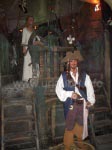
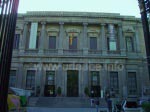

Similar to the Museo Thyssen-Bornemisza, the Museo Cerralbo shows the former private collection of the private scholar Enrique de Aguilera y Gamboa Marquis Cerralbo. But he did not only collect paintings amongst which there are excellent artworks as for example El Greco, Zurbarán or Ribera. Also Auch archaeological findings, procelain of the royal family and special furnishment of severaleras were part of his passion. The museum is located at the subway stations Plaza de Espaņa (L6, L10) or Ventura Rodríguez (L3).
Those who want to follow the traces of famous Spaniards or want to know more about them and their lives should visit the museums Panteón de Goya, Museo de Sorolla or the Casa-Museo Lope de Vega. The Panteón de Goya is the last resting place of the grant painter and is located at the subway station Príncipe Pío (L10). The Venecian painter Sorolla was certainly far from being as famous as Goya; but his residential house located at the subway station Ruben Darío (L5) offers some interesting insights into his accommodations and artworks. To the contrary, Lope de Vega hingegen was not a painter but was dedicated to the poetry and drama. His memorial place is located at the subway station Antón Martín (L1)and therewith in the city district Huertas, where many of his kind lived.
For those who are not very interested in arts but much more in visual or curious things, I recomend museums as the Planetarium (subway station Méndez-Alvaro L6), the carriage museum (subway station Opera L2, L5), the museum of natural sciences (subway station Nuevos Ministerios L6, L8, L10) or the waxworks (subway station Colón L4) - also very suitable for children.

Back to the index Madrid
Author: Stefanie Kotulla; Copyright 2008-2008: Patrick Wagner, www.tourist-guide.biz
|